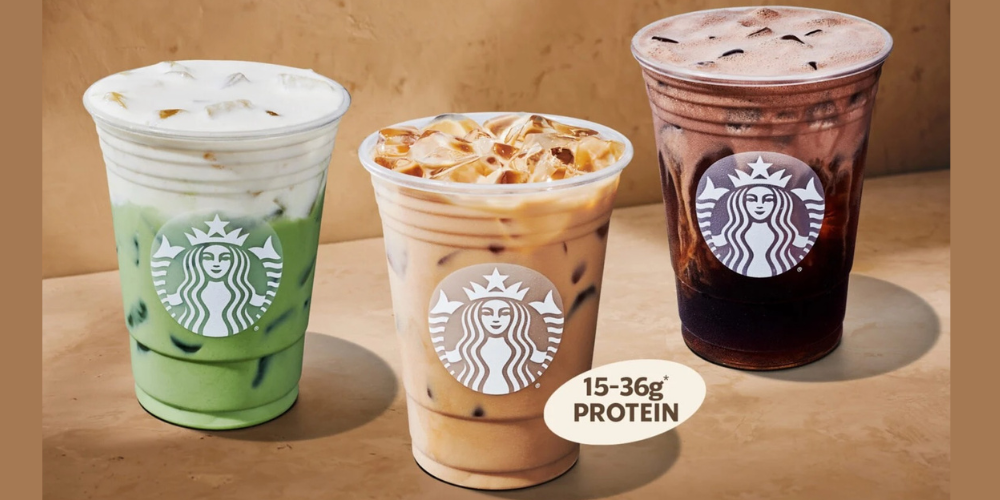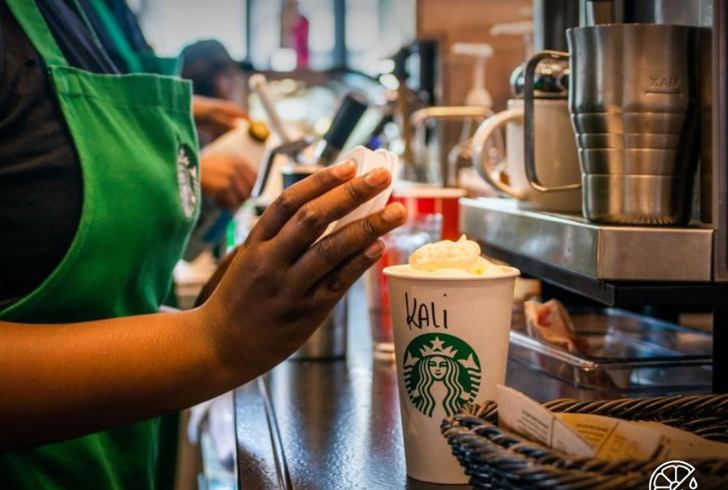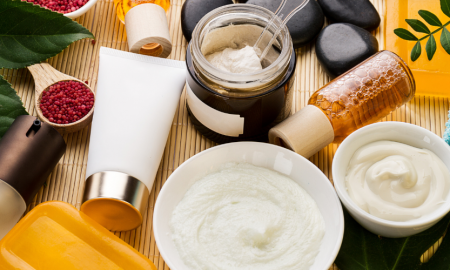
Starbucks Launches Protein Lattes | Health Boost or Marketing Play?

Cereal, popcorn, ice cream, and even candy now come with extra protein. That trend has reached coffee shops too, and Starbucks is stepping in with its own twist. Starting September 29, stores across the U.S. and Canada will offer lattes made with protein-enhanced milk, along with protein cold foam that can be added to any beverage. Depending on the order, these drinks contain anywhere from 15 to 36 grams of protein.
The announcement comes just after Tim Hortons launched a protein latte using lactose-free, high-protein milk, delivering up to 20 grams per cup. Both coffee giants are tapping into a growing demand for high-protein options, but it raises the question: is this new latte lineup a healthy move, or simply another way to cash in on a popular trend?
Why Protein Is Showing Up Everywhere
The rise of protein-focused products has been steady, turning once niche foods into everyday items. Analysts estimate the protein market is worth billions and still climbing at about seven percent annually. That growth is fueled by people who see protein as essential for health, weight management, and fitness.

Instagram | cbc.ca | Starbucks and Tim Hortons are capitalizing on the trend of adding protein to daily routines.
From protein cereals lining grocery shelves to shakes and bars at gyms, the demand is clear. Starbucks and Tim Hortons see an opportunity to meet customers where they are—seeking more convenient ways to squeeze protein into daily routines.
For coffee chains, the potential goes beyond health benefits. Drinks with added protein typically come at a higher price, boosting revenue while keeping the brand aligned with consumer interests.
The Cost of Adding Protein
Protein-enhanced drinks usually come with a price bump. At Tim Hortons, the protein latte costs $4.49 compared to $3.69 for a regular latte. Adding the high-protein milk to another drink is an extra $0.80. Starbucks hasn’t released its pricing yet, but history suggests these lattes will not be the cheapest option on the menu.
This mirrors the approach seen with other diet-driven products over the years. Low-carb and sugar-free foods had their moment in the mid-2000s, marketed as “better-for-you” options. Analysts suggest protein may follow a similar trajectory: growing fast now but eventually leveling off as the novelty fades.
Why Starbucks May Hold an Edge
Unlike temporary food fads, protein has staying power. It is a fundamental macronutrient and less likely to be dismissed as just another passing craze. Experts believe that Starbucks has the potential to succeed with its protein drinks if three factors align: taste, balance, and price.
A latte loaded with protein may grab attention, but if it doesn’t taste good, customers won’t come back. The recipe needs to make sense nutritionally and still feel like an indulgence worth the cost. If Starbucks manages to deliver on these points, the drinks could find a permanent place on the menu instead of being a short-lived experiment.
Do Consumers Really Need Extra Protein?

Instagram | short.squeez | A protein latte may be harmless, but might not offer the promised health boost.
Health experts urge caution when it comes to these new offerings. While protein is vital, the average person may not need as much as they think. Recommendations suggest most adults require about 0.8 grams of protein per kilogram of body weight. That is less than many believe.
Athletes and those with specific fitness goals may need more, but not the massive amounts often promoted online. That gap between perception and reality has created what some dietitians call a “protein halo,” where any product with extra protein is seen as automatically healthier. The reality is that some protein-enhanced foods may contain more sugar or additives to improve taste, offsetting the intended health benefits.
Experts also note that high-protein diets can crowd out other essential nutrients if fruits, vegetables, or whole grains are neglected. While drinking a protein latte won’t harm most people, it may not offer the meaningful health advantage the marketing suggests.
A Trend Worth Watching
Protein has cycled through food culture for decades, from the Atkins era of bacon and eggs to today’s powders and fortified snacks. Starbucks’ move into protein lattes reflects how deeply this nutrient has entered mainstream dining, extending far beyond gyms and supplements.
Whether these lattes stick around will depend on how customers respond. Strong sales and repeat orders could turn them into a lasting staple, but if they fail to impress in terms of taste, they’ll likely join the long list of short-lived health fads.
At this moment, though, they reflect a broader shift: Starbucks is tapping into the overlap between wellness culture and mainstream coffee culture, a space that’s shaping what people choose to drink every day.
More inHealthy Trends
-
`
Why Are Men Taller Than Women? New Genetic Study Finds Clue
For centuries, the average height difference between men and women has been noticeable—men generally stand about five inches taller. While environment...
July 23, 2025 -
`
How Upcycled Beauty Ingredients Are Reshaping the Industry’s Future
The beauty industry is going through a big shift — and it’s not just about trends. As waste problems grow and...
July 17, 2025 -
`
A Look Inside Faith Kipyegon’s Groundbreaking Mile Run in Paris
Last week in Paris, Faith Kipyegon returned to a place she knows well: Stade Sébastien Charléty. But this time, she wasn’t...
July 9, 2025 -
`
Dairy Is Making a Major Comeback — And Health Shoppers Are Loving It
Just a few years ago, dairy sat quietly in the back seat while plant-based alternatives took the spotlight. Now, it’s stepping...
July 4, 2025 -
`
Does Aging Cause Dental Problems?
Aging doesn’t automatically mean losing teeth or developing gum disease. In fact, older adults today are holding onto more of their...
June 25, 2025 -
`
How Upcycled Ingredients Are Shaping the Future of Cosmetics
What used to end up in bins or compost heaps is now finding a new life inside skincare bottles and beauty...
June 18, 2025 -
`
Rock Legend Rod Stewart Trains to Break Sprint Record at 80
Age isn’t slowing Rod Stewart down. Known worldwide for his legendary voice, stadium-filling tours, and timeless hits like “Maggie May”, the...
June 11, 2025 -
`
The Truth Behind Detox Diets – Health Boost or Risky Trend?
It’s hard to scroll through your feed without seeing someone sipping green juice with promises of instant energy, glowing skin, and...
June 3, 2025 -
`
Is Dr. Oz Fit to Lead Medicare?
The announcement of Dr. Mehmet Oz as President-elect Donald Trump’s pick to lead the Centers for Medicare and Medicaid Services (CMS)...
May 29, 2025














You must be logged in to post a comment Login